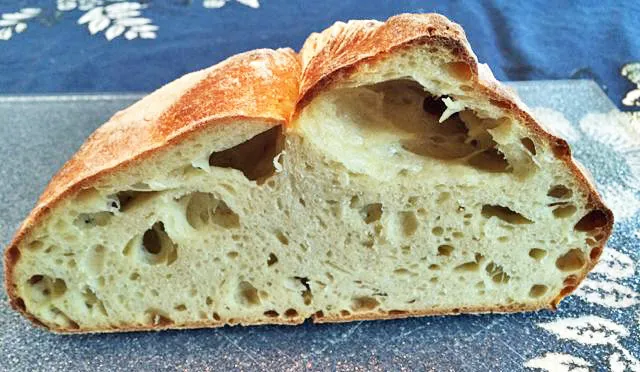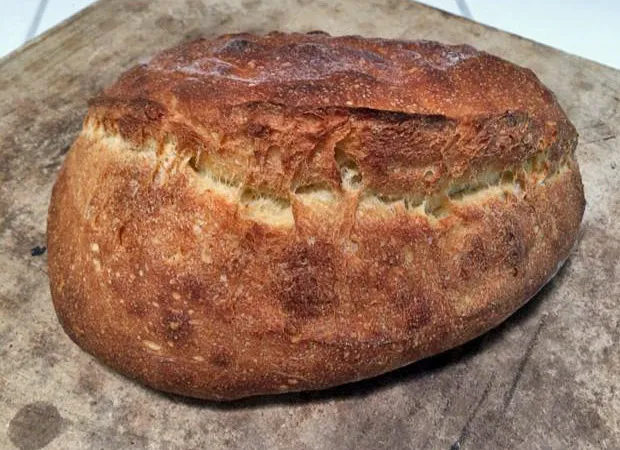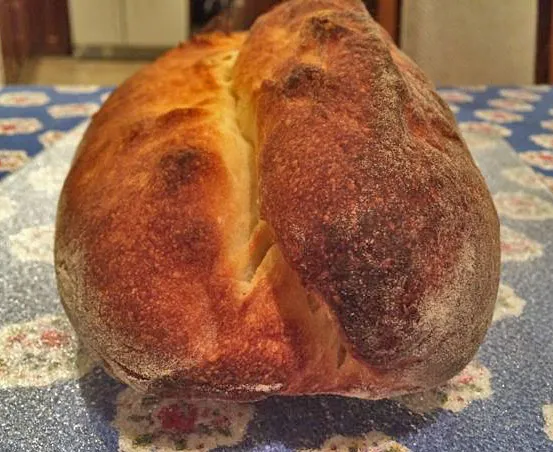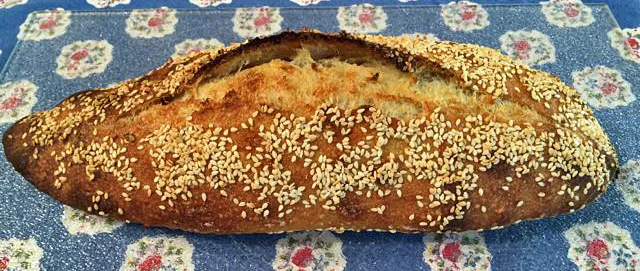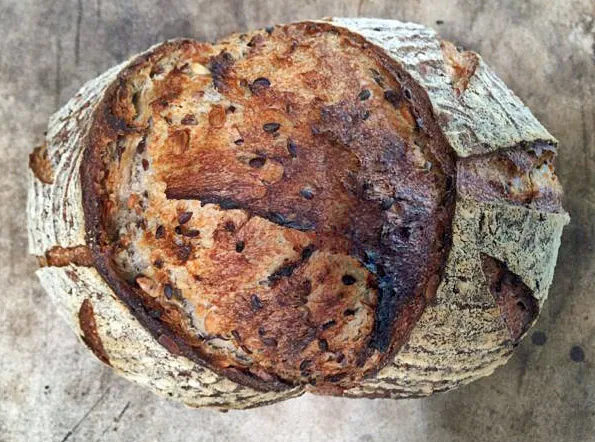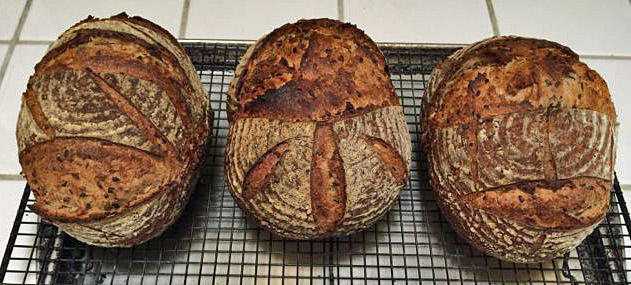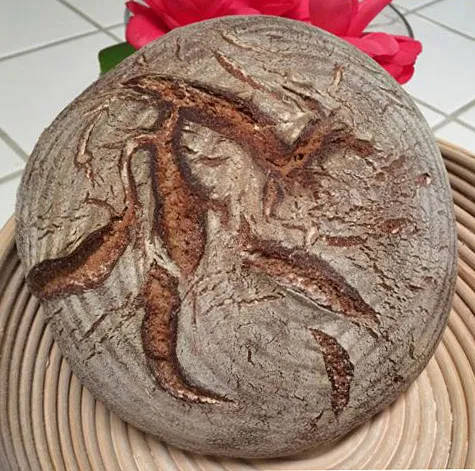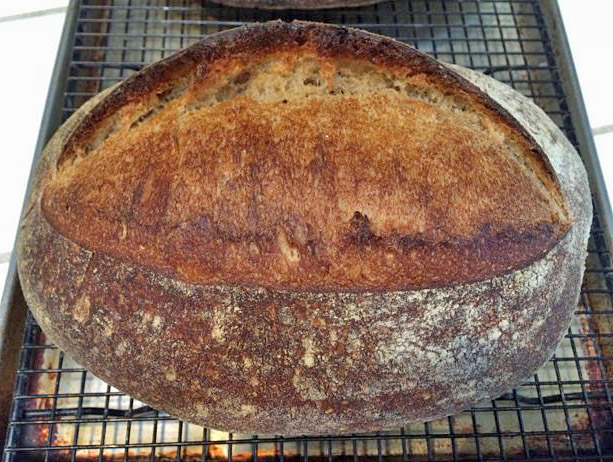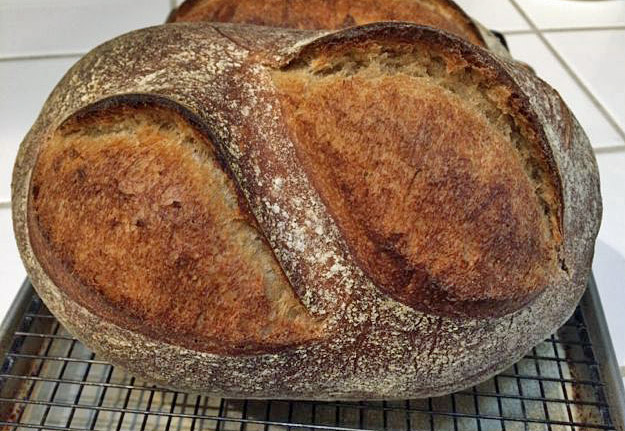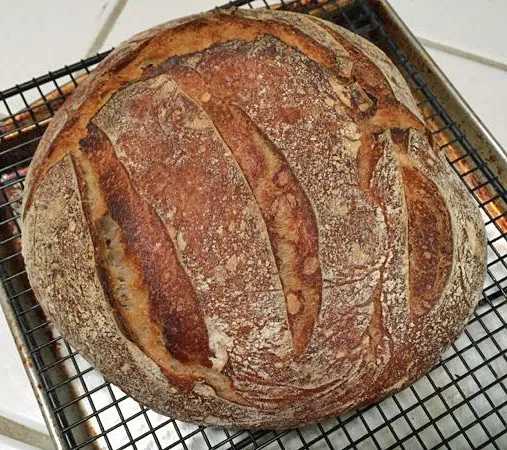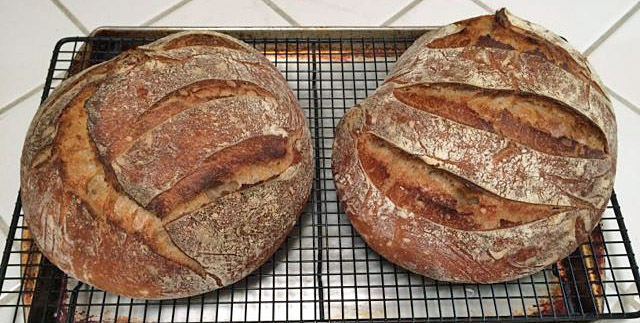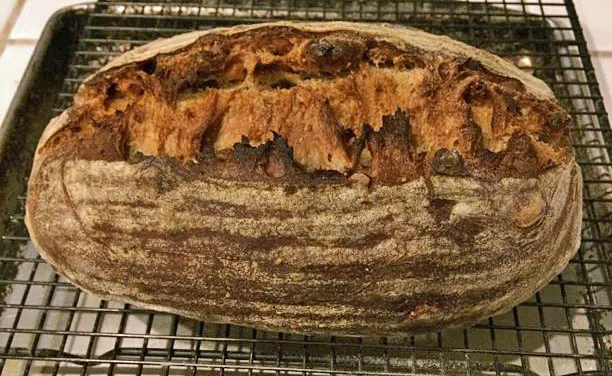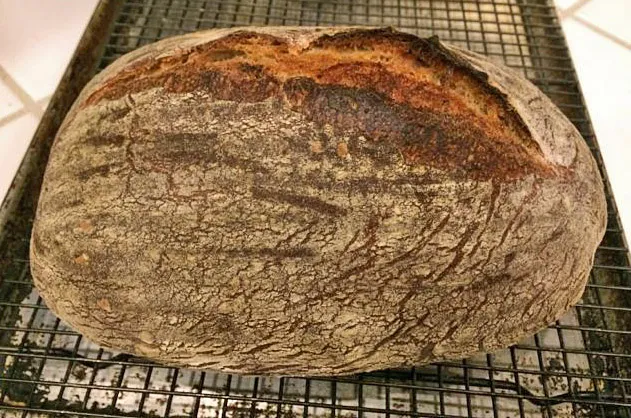Pane Tipo di Altamura in a WFO: A mitigated disaster
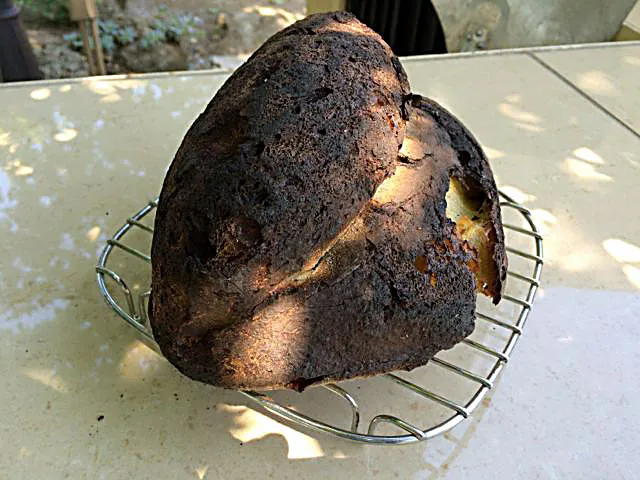
This morning, I baked two loaves of Pane Tipo di Altamura (1kg each) and one loaf of my Pugliese Capriccioso (1 kg) in my friend J.S.'s Wood-Fired Oven. The breads were baked for a potluck lunch for about 25 most of whom are Italian-Americans.
Both breads were cold retarded in bannetons after final shaping for about 18 hours.
- Log in or register to post comments
- 15 comments
- View post
- dmsnyder's Blog
